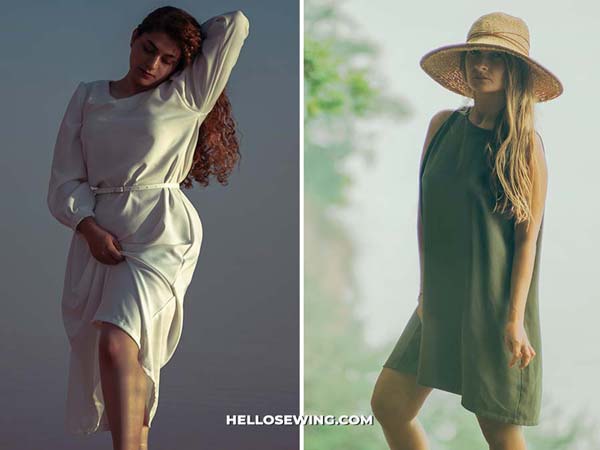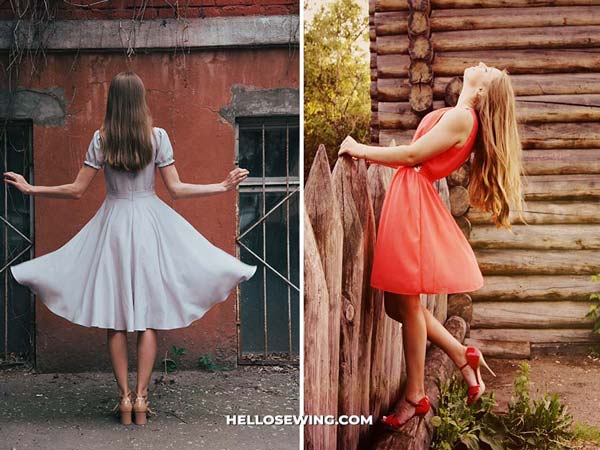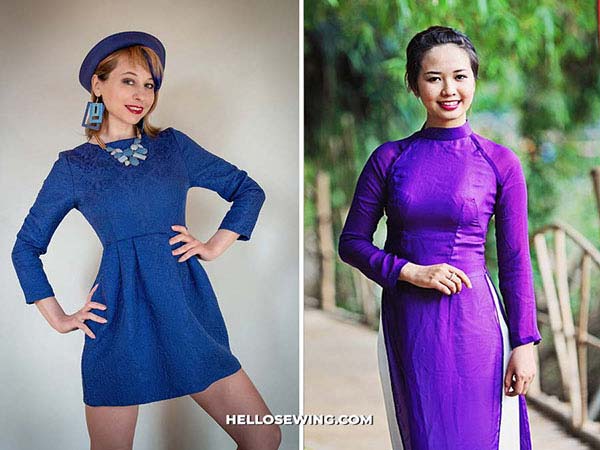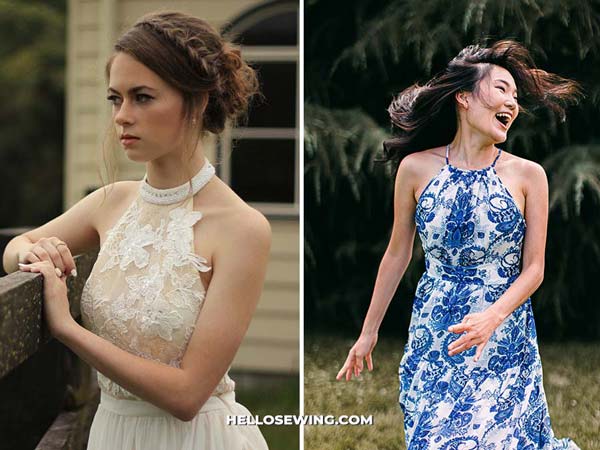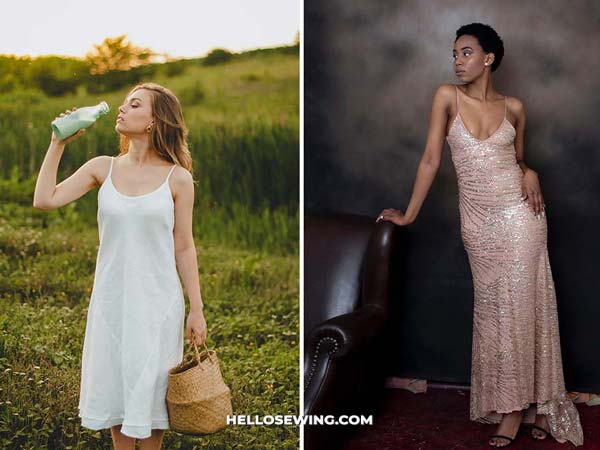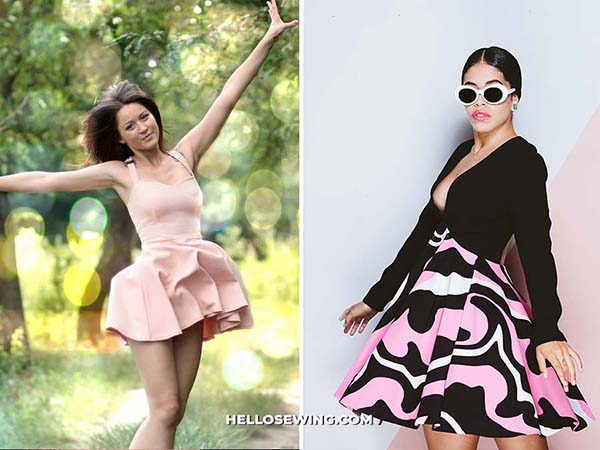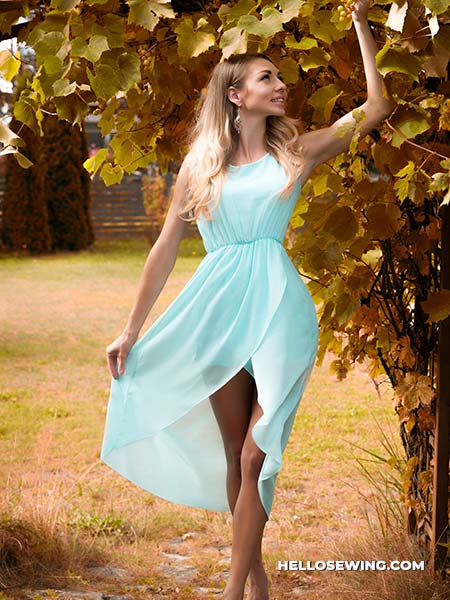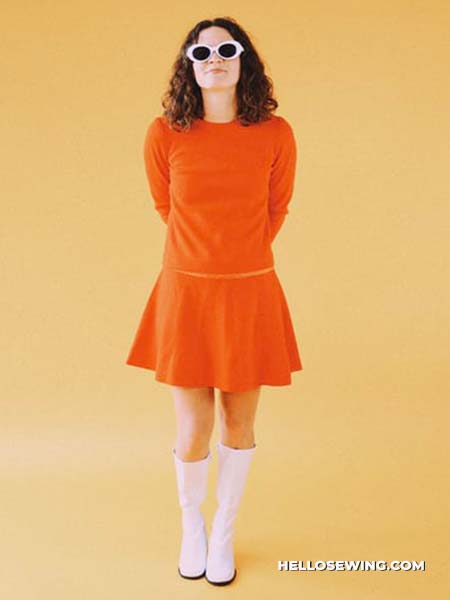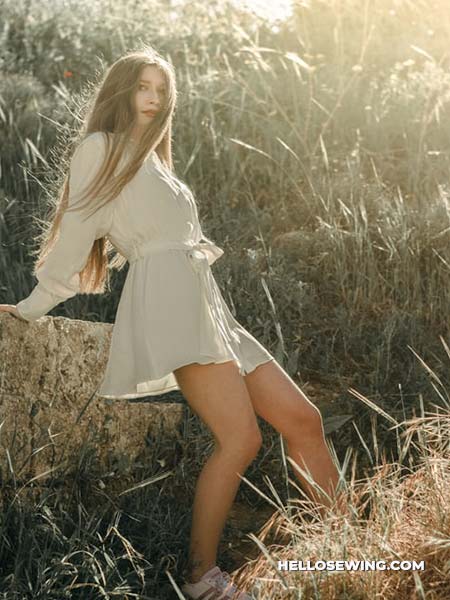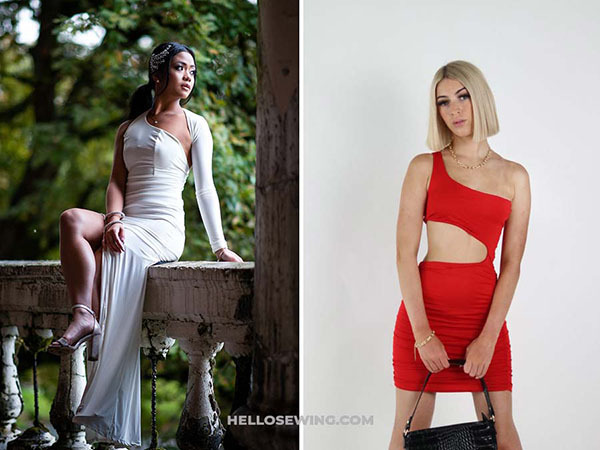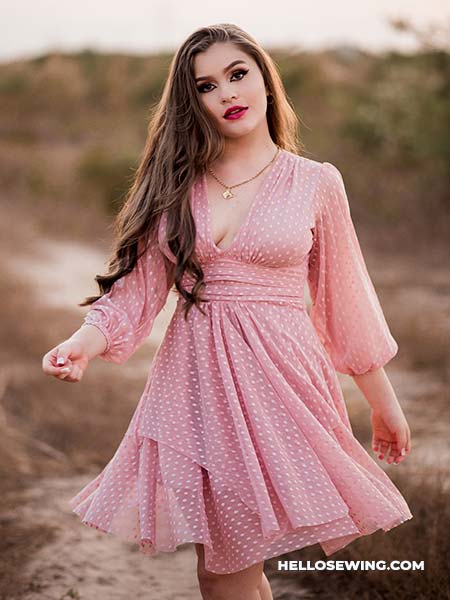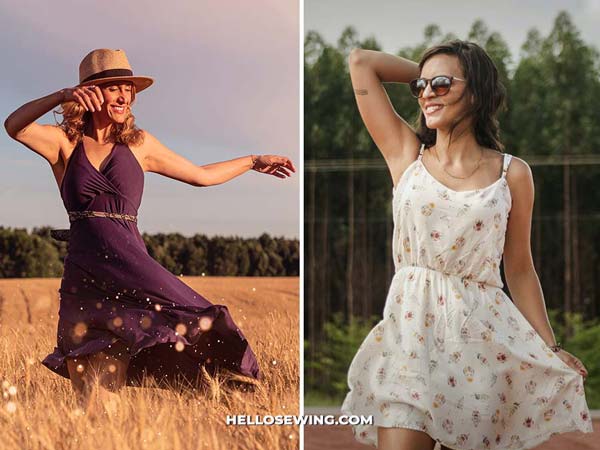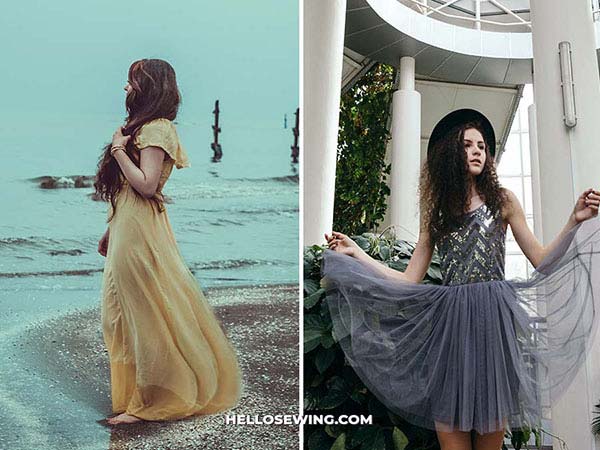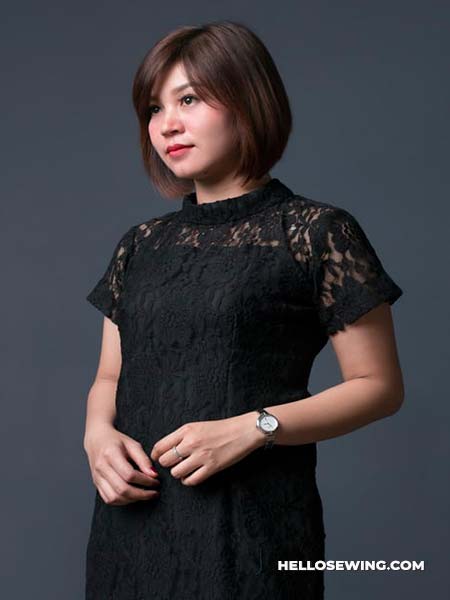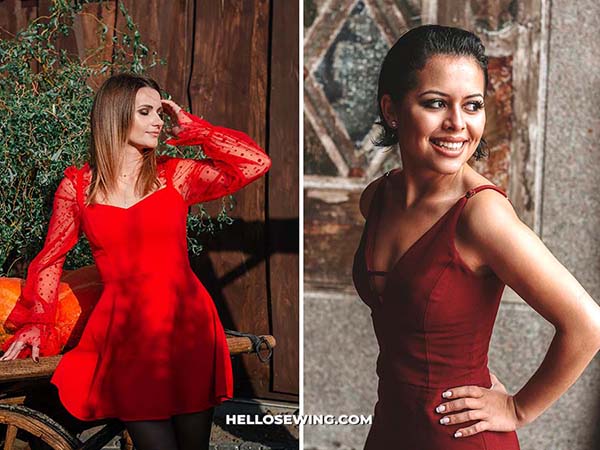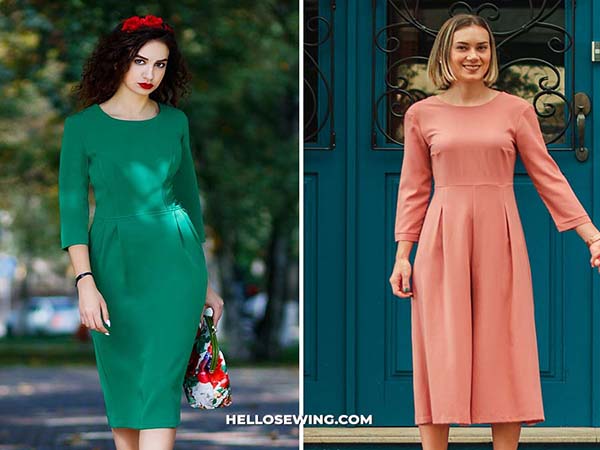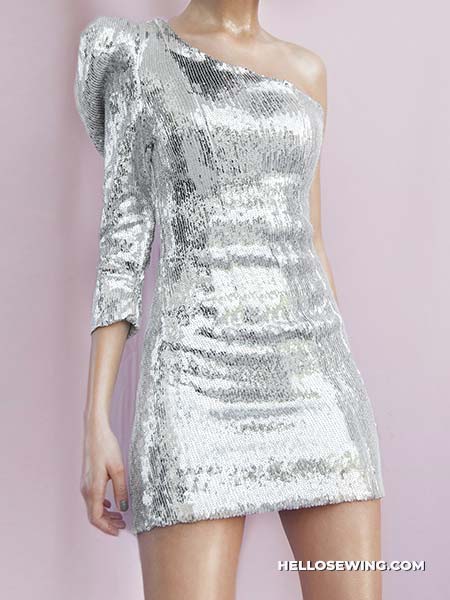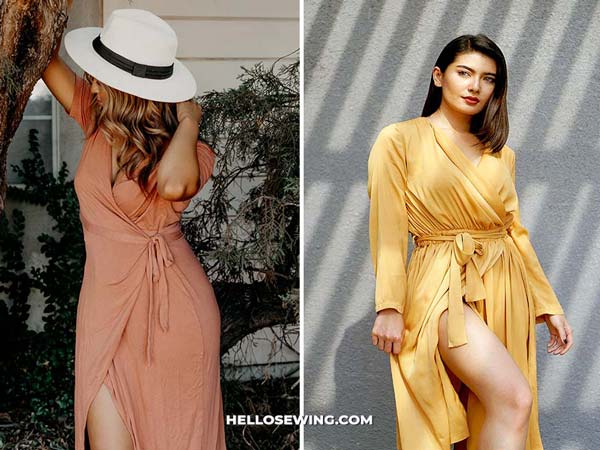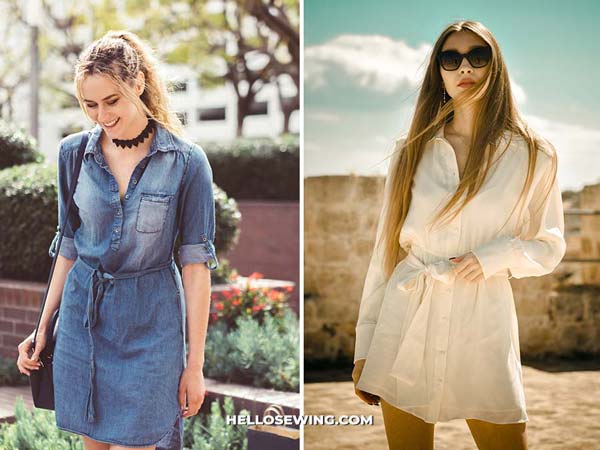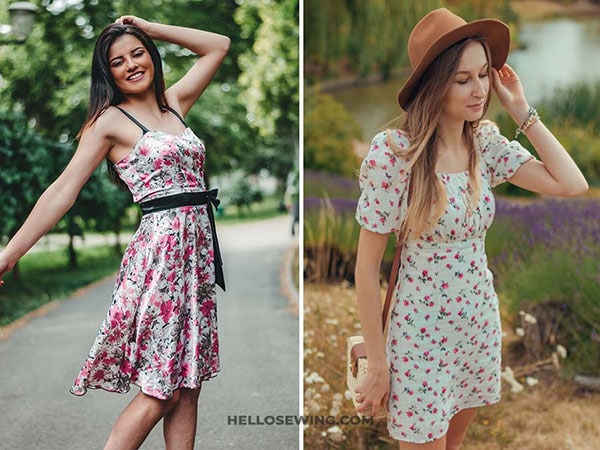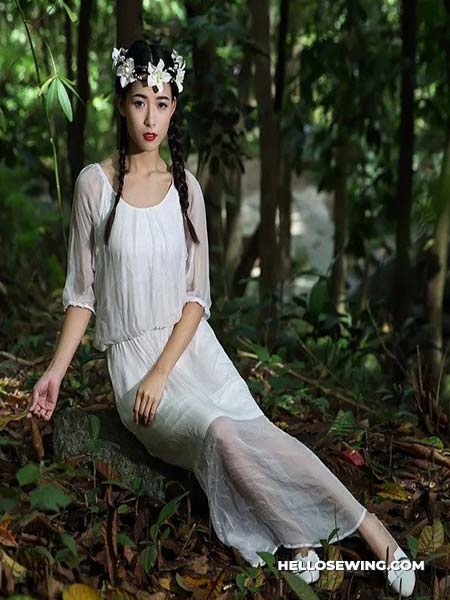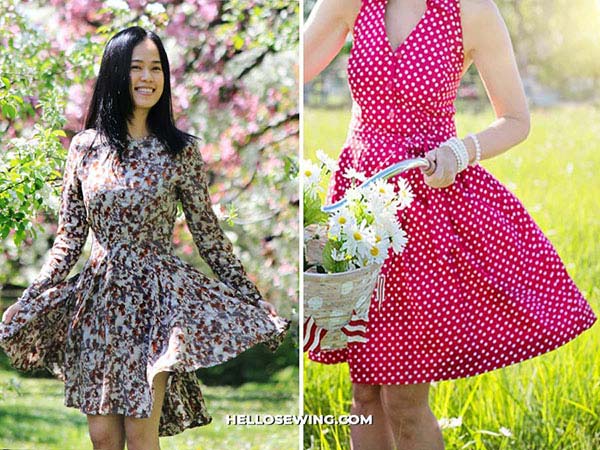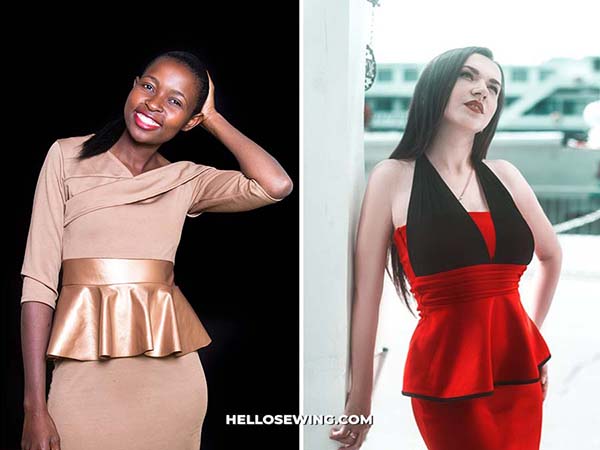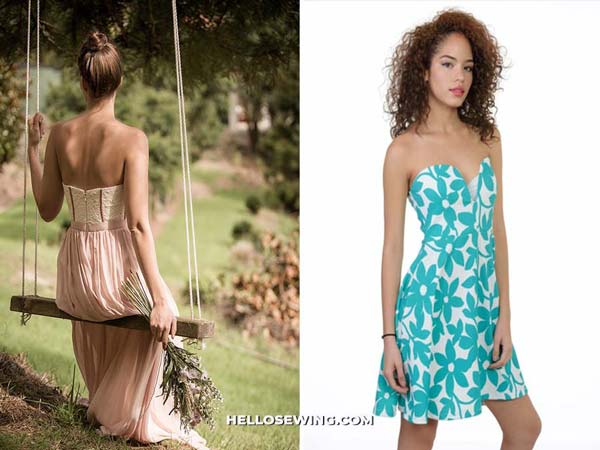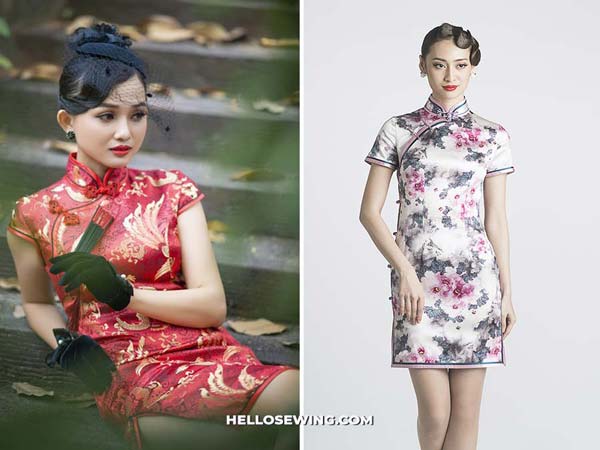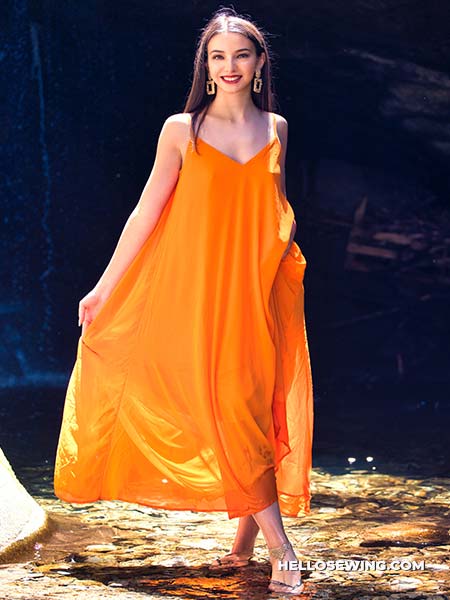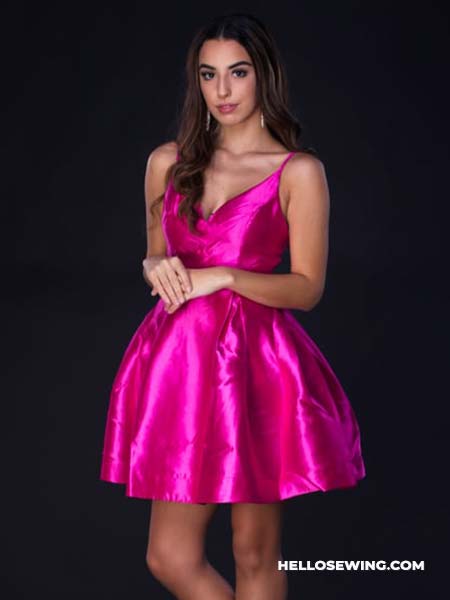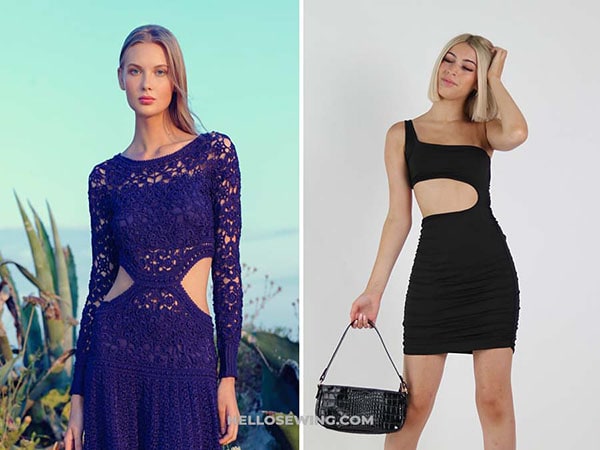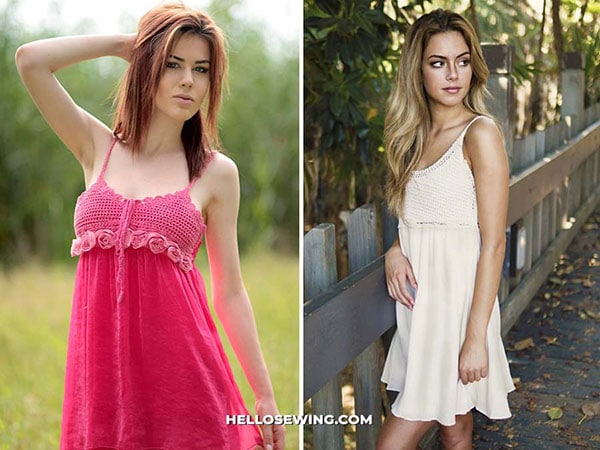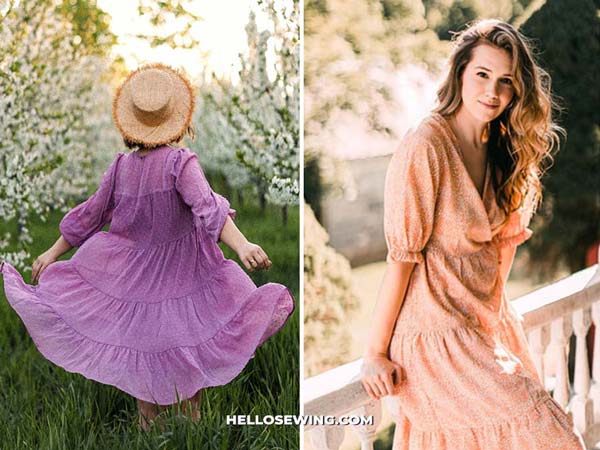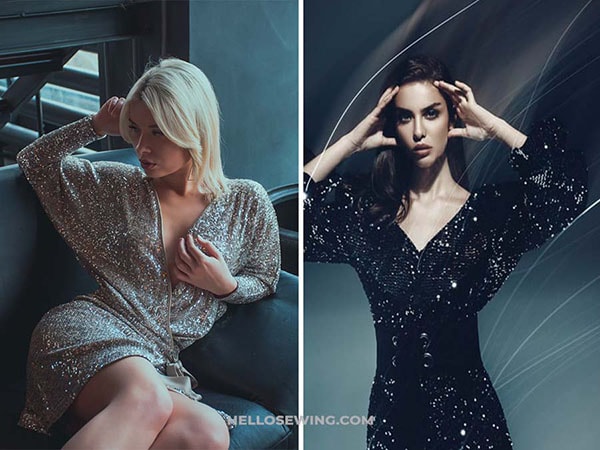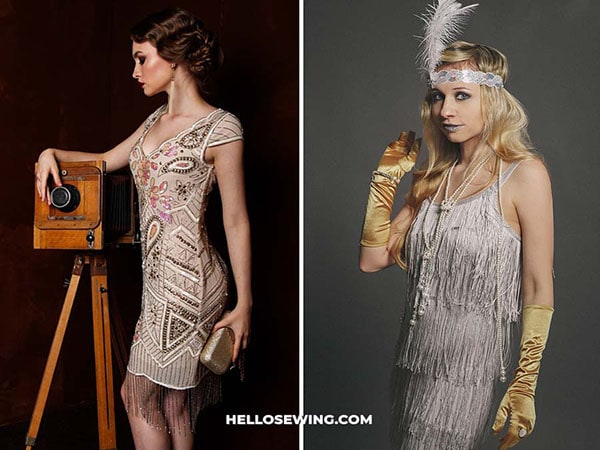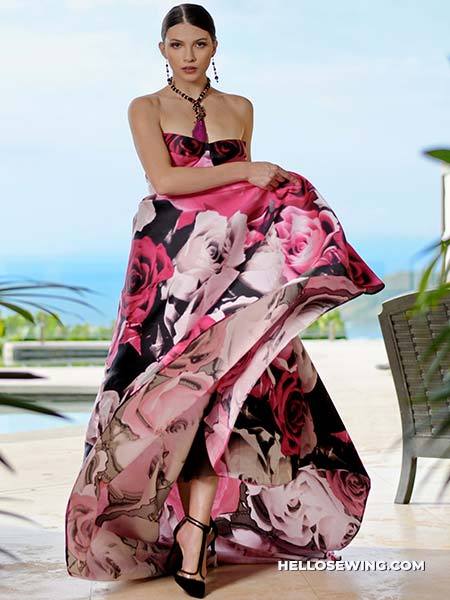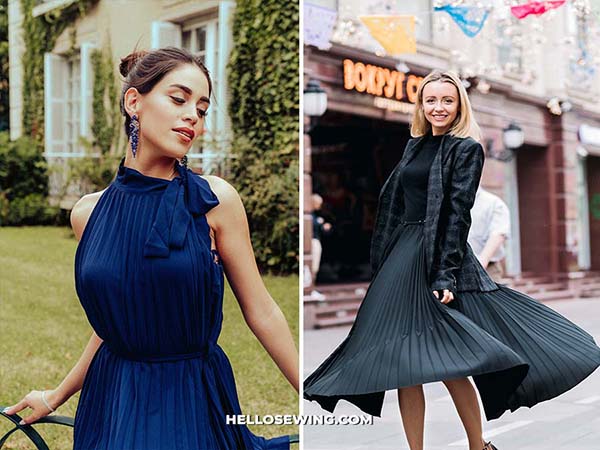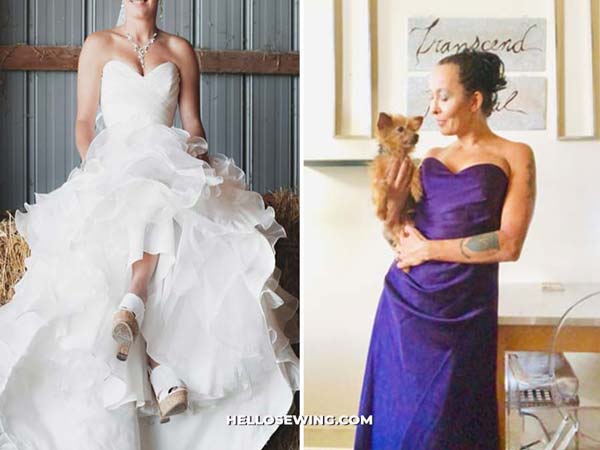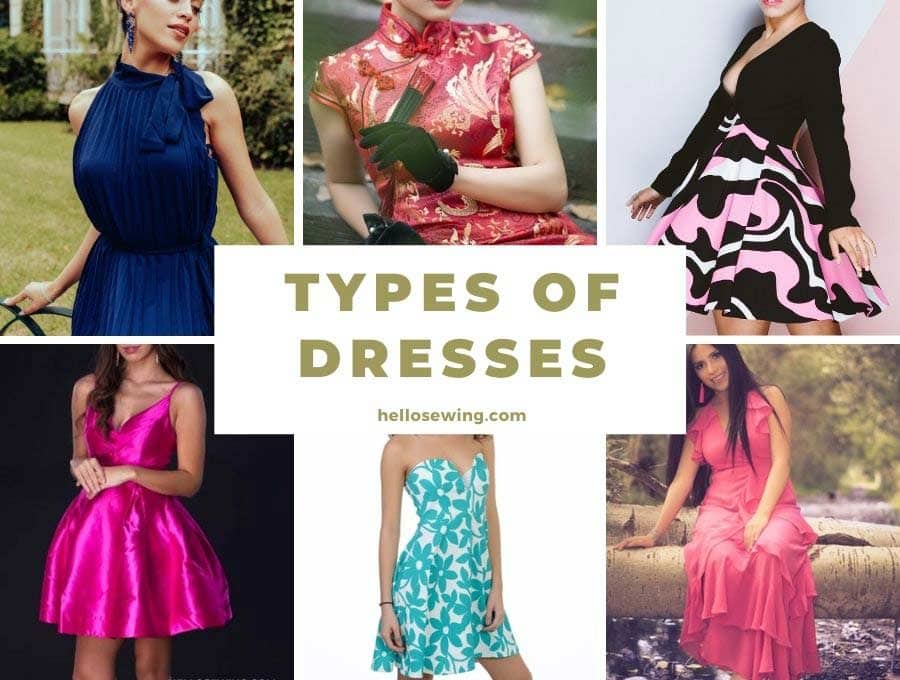40+ Types of Dresses – Ultimate Guide to Dress Styles
So, you want to buy or make a new dress – but which of the 40 dress styles discussed here, are the ones for you, based on your figure type, your lifestyle and personal preferences? Of course, we are also guided by what is in style for the season. To help make things simple we have prepared this illustrated guide with 40 different styles of dresses. All the types of dresses illustrated have a short description to help you choose, as well as notes on when and where to wear them. We also let you know in which decade a style was popular, and as fashion comes full circle many will come back into fashion. Overall people choose dress styles that suit their lifestyle, so the look can range from casual and Bohemian to sophisticated and chic, or sexy for that big date.
Table of Contents
- 1 Types of Dresses
- 1.1 Shift dress
- 1.2 X Line dress
- 1.3 Apron dress
- 1.4 Sheath dress
- 1.5 Long-sleeved dress
- 1.6 Halter dress
- 1.7 Slip dress
- 1.8 Pouf dress
- 1.9 Tulip dress
- 1.10 Drop waist dress
- 1.11 Skater dress
- 1.12 Asymmetric dress
- 1.13 Paneled waist dress
- 1.14 Sun dress
- 1.15 Fit and flare dress
- 1.16 Yoke dress
- 1.17 Princess seams dress
- 1.18 Pegged dress
- 1.19 Empire waist dress
- 1.20 One Shoulder dress
- 1.21 Tunic dress
- 1.22 Wrap dress
- 1.23 Shirtwaister
- 1.24 A-line dress
- 1.25 Blouson dress
- 1.26 Bodycon dress
- 1.27 Nipped waist dress
- 1.28 Peplum dress
- 1.29 Strapless dress
- 1.30 Caftan dress
- 1.31 Balloon dress
- 1.32 Qi Pao (Cheongsam)
- 1.33 Tent dress
- 1.34 Baby doll dress
- 1.35 Cut out dress
- 1.36 High Waist dress
- 1.37 Smock dress
- 1.38 Dolman dress
- 1.39 Flapper dress
- 1.40 Jumper dress
- 1.41 Bra style dress
- 1.42 Ball gown dress
- 1.43 Pleated dress
- 1.44 Maxi dress
- 1.45 Bouffant dress
- 1.46 Sweetheart dress
- 2 Dress styles FAQs
Types of Dresses
Shift dress
The little shift dress came into its own in the 1960’s when designer Mary Quant, made the mini-shift the aspiration of a generation of young women who liked the way the first supermodel, Twiggy (Lesley Hornby) with her fresh short pixie-cut hair, her enormously long lashes, and twig like figure heralded the freedom of the mini-skirt era. The shift can come in any length but is basically body skimming as opposed to body hugging with the straight silhouette focusing less attention on hips and thighs.
X Line dress
The X line shows off an hourglass shape – nipped in at the waist styling, helped by the addition of a belt, while allowing space for fuller breasts and hips. The silhouette creates a balance between the shoulders and the fuller hem, with the smaller waist section providing definition. The X line is a popular style for coats as it provides emphasis on the waist with padded shoulders to balance out the silhouette.
Apron dress
The apron dress with its crossover back is currently popular with its casual weekend look. It can be worn with a T-shirt or long sleeved top underneath but in warmer parts of the world like the Gold Coast of Australia, the Apron dress is worn simply with a bikini top underneath or a small bandeau top, providing an understated yet casually sexy look.
Sheath dress
From corporate wear to evening wear the sheath dress spells class – it can be combined with heels for a big night out, or top corporate look, or dressed down for shopping with flats. It is flattering on slimmer figures and provides ease of movement. The classical sheath is just above or below the knee, showing calves and ankles.
Long-sleeved dress
Any style dress can be made with long sleeves, whether it is a sheath or an A-line, or even a flare. It is important when choosing a long sleeved style that the sleeves fit well in order not to add bulk to the style – for example a bell sleeve with a mini A-line dress creates too much width across the hips. For corporate look go for a fitted sleeve on a sheath dress, and for casual wear a fit and flare style with long sleeves without too much bulk in the sleeves.
Halter dress
The halter dress shows off pretty shoulders and comes in and out of fashion on a regular basis – sometimes the emphasis is on the bustline and sometimes the midriff and sometimes the shoulders. The halter dress can be somewhat Bohemian or Woodstock inspired, when it come in flowing maxi lengths, or it can be short and fitted, giving the halter a more sporty look. For evening, the halter dress can place emphasis on the bust and shoulders, with sheer length in the skirt section. For girls who like to wear their hair down the halter is perfect as it does not clutter the neckline and shoulder area. With hair worn up it can expose a beautiful nape of the neck and back. Some halters are cut to skim across the shoulders while others plunge to waist level at the back.
Slip dress
In the 1940’s dresses were complicated with pins and tucks, but the slip underneath was a simple garment, with the bust defined and flowing in an easy A-line shape. Then people decided the slip itself looked pretty good without the complicated dress, and made slips in outer wear fabric. They are easy to slip on and off and have been popular for decades.
Pouf dress
Only certain figures types can wear the pouf dress with its nipped in waist and yards of billowing fabric gathered into the waist, making it pouf out. It is similar to the bouffant style but is less formal in that it does not have hoops. For those with small waists it is ideal, as it can hide wider hips under all the ‘poufiness’
Tulip dress
The tulip dress takes its name from the flower with its slightly bell shape at the bottom, yet fitting and sophisticated. This is a style that has been in and out of fashion. The panels of the dress are usually cut to resemble petals of a tulip, but this is not always so. The dress has a skirt that fits to the hips then bells out into the tulip shapes.
Drop waist dress
The drop waist dress hits on the mid hips, making someone who doesn’t quite have the hourglass figure look more boyish. It was a feature of the Flapper era in the 1920’s when women were discovering their freedom and escaping the confines of the previous century’s constricting styles.
Skater dress
The skater dress with its slight flare to the skirt was popularized by figure skaters who needed something they could move in on the ice but that had a flattering and feminine look.
Asymmetric dress
Often favored by Japanese designers, the asymmetric look lend itself to blocks of bold color, and the use of quite structural fabrics that emphasize the angularity of the cut, rather than molding to a woman’s curves. The fastening will often be placed on a slant across the bodice of the dress rather than a straight zip at the side or back
Paneled waist dress
The emphasis on the waist is achieved by the panels providing a structured look that flatters the figure.
Sun dress
Everyone’s favorite, the sun dress heralds lazy summer days, sparkling azure seas, beach sand between the toes, and wide straw sun hats.
The sundress is usually strappy, and easy to slip on over a bikini or swimsuit, is worn with flat sandals and sun-kissed hair. The favorite fabrics are cotton and linen blends that are cool in summer, rather than synthetics. The shoulders are usually strappy, the fit loose, often fairly short, with an emphasis on bare sun kissed skin.
Fit and flare dress
The emphasis in this dress is on shoulders, bust and waist, before flaring out over the hips – often a perceived problem area. The styling draws attention to the upper half of the body. Fit and flare dresses can be short, mid length or maxi.
Yoke dress
The yoke of the dress often provides a color contrast feature of the dress or a different texture – for example a lace yoke. The yoke gives definition to the shoulder area and provides the hanger for the rest of the dress.
Princess seams dress
These type of dresses were popular in the 1940’s and defined body shape really well in the era when clothes had to be cut to fit the shape of the body. This was before the era of stretch fabrics that naturally mold to the body shape. The length of the panels with the princess seams running from the bust area to the hem add to a flattering look, providing a shapeliness to the dress that darts just can’t achieve. The princess seams are always popular for girls who like a look that draws attention to the bust and a flat stomach. The panels often flare out a bit from just below the waist to create a fuller skirt, but can also be cut straight for a hug-and-fit look.
Pegged dress
Think of the shape of a clothes peg and you will understand the peg dress – it is usually straight and places emphasis on the waist, yet has a structured look to it, suited to the office. Think of a shift dress with a bit more shape to the waist area with darts or place for a belt.
Empire waist dress
The Empire line was a dress style that was popular in the Napoleonic era, when dresses were low cut, with the skirt attached right under the bust, creating a flowing look. It is still a popular look for sundresses and eveningwear.
One Shoulder dress
The one shoulder is a look that designers flirt with periodically. Sometimes it’s a sleeveless dress, which can look really good, or a short sleeved look. The long-sleeved one-shoulder dresses always provoke comments about having lost half the dress, but they can look very elegant. The one shoulder is more practical on a sleeveless dress for summer.
Tunic dress
The tunic dress is a creative little number one can slip on and be ready to go. For summer it is ideal alone for slipping over swimwear for an instant, ready for action look. The tunic dress can be really short and worn over denim shorts for a contemporary look, or worn alone paired with a pair of elegant heels. The tunic dress is distinguished by slits up the sides.
Wrap dress
Wrap dresses are also in and out of fashion with designers periodically bringing back this style. They are very easy to put on and adjust easily to a person’s size. They are figure flattering, especially if bias cut for maximum fit and flare. Popular in the 1970’s they are currently taking a bow on the 2020’s fashion stage. They can be long sleeved and flowing or short sleeved with more fit to them. With the wrap tie slightly to the side they take the emphasis off the stomach area. They also provide a sexy look with the wrap allowing a fair bit of leg and thigh to be exposed when a woman moves.
Shirtwaister
The shirt waister combines the styling of a button up shirt extending into a skirt that can either be fairly fitted or flare out a bit with panels or pleats. It is quite a corporate style and is accessorized worn with a belt
A-line dress
This dress type is one that is almost always popular. It fits at the top and skims the hips, avoiding clinginess on an area most women are concerned about.
Blouson dress
The blouson style relies on some full ness in the top that drapes over the skirt part giving an effortlessly casual yet chic effect. The blouson is often combined with gladiator sandals that come up the leg, or espadrilles with their ties across the bottom part of the leg just above the ankle.
Bodycon dress
This dress style clings to the curves of the body and can be combined with different jackets and footwear to create looks ranging from outdoorsy to clubbing. For example a bodycon dress with sneakers and a denim jacket will take you for casual days out and about, whereas a black bodycon dress paired with thigh high boots will give a sexy evening look. If you are aiming for a longer silhouette, choose a high necked sleeveless bodycon dress. For an office look the bodycon dress can be worn with a blazer and court shoes. A-List celebrities have made this style a favorite. The style usually comes in plain colors and it’s advisable to pick a color to suit the occasion – for example a red dress for evening, a midnight blue for the office, and a mustard or grey for casual days out. Black works just about everywhere but particularly for evening wear.
Nipped waist dress
Nipped waist dresses create an hour glass figure with the dress cut to bring emphasis to the waist. Ones with wide skirts are flirty type dresses and can be worn on weekends or as resort wear, with sandals or espadrilles, whereas for the office a nipped waist dress would have a straighter skirt and can be worn with a blazer and heels.
Peplum dress
The peplum came into fashion in the 1940’s and had a brief resurgence in the era of power dressing of the 1980’s when structured clothing was popular with padded shoulders and shaped skirts, the peplum being an added bit of fabric that skimmed the hips, lessening the severity of the tailored office style suit.
Strapless dress
Also known as the boob tube the strapless dress usually relies on a ruched elasticized top to keep it up and is worn casually on hot summer days as resort wear. The other type of strapless dress is the ball gown that relies on a shaped corset style top, often with stays to keep the shape and can have a full skirt, a flowing skirt or be cut in panels that are body hugging.
Caftan dress
The brightly printed or embellished caftan suits the Bohemian artist look and is suited to warm climates. Often worn by fuller figured women for its comfort, it is an easy and exotic look to pull off when lounging around the house or pool.
Balloon dress
The balloon dress has a fitted top then a full skirt which it stitched to a lining at the hem then folded back up to the waist to create the effect of a balloon. It is suited to those with long legs and who are fairly slim.
Qi Pao (Cheongsam)
Popularized in the 1920’s and 30’s by expatriates in places like Shanghai and Hong Kong, the Qi Pao borrows from the Chinese traditional dress with its asymmetrical fastening across the chest, high neckline, figure fitting form, and slit in the side. Traditionally made from brocade or silk, modern cheongsams often have lace overlaid on the lining fabric or are made from cotton or velvet. The sleeves are traditionally short and fitted but can also be long. The Qi Pao is an elegant look for formal afternoon or evening occasions.
Tent dress
The tent dress came into fashion in the 1970’s, hanging from the shoulder and standing out in the shape that gave it its name. It has not been widely popular since then, other than as a beach dress or for resort wear, where it is perfect to slip on over swimwear.
Baby doll dress
The baby doll dress is usually short, has a structured top and a gathered high waist. It is often worn with knee high boots or sandals for a casual look.
Cut out dress
This type of dress comes into fashion quite regularly – the placing of the cut-out varying from below the neckline to reveal some cleavage, the shoulders, to the back to reveal a tanned torso. Sometimes the sides are cut away, or areas around the midriff – it all depends on which area of the body fashion designers have decided is the focus for the season.
High Waist dress
The high waisted dress has a longer bodice section than the Empire line – falling midway between the bust and the natural waist. It gives a casual flirty look to dresses and is often used for sundresses and casual wear and suits most figure types.
Smock dress
The smock has a floaty style and you look effortlessly elegant in it. It’s very much a young-at-heart, carefree look.
Dolman dress
Possibly not the most comfortable to wear, the dolman sleeve starts from the waist and tapers to the wrist, it provides a flowing look but for active woman raising the arms does cause the dress to pull upwards with the fabric of the sleeve. It needs to have a narrow skirt to balance the bulk in the sleeves.
Flapper dress
When women gained their independence after World War 1, the 1920’s were associated with short hair, smoking cigarettes, the shorter flapper skirt and long lengths of pearls – the Great Gatsby era. Flapper style dresses have a sheath silhouette softened with the addition of rows of fringing that provide movement when a person dances or walks.
Jumper dress
The jumper dress usually has long sleeves and looks like a jumper was knitted far too long – it shapes to the hips or can hang a bit loose. It can be short and worn in winter with thigh high boots or it can be longer and teamed with court shoes or ankle boots.
Bra style dress
Bra style tops were popular in the 2010’s when showing cleavage was the norm, but they are mainly featured on sundresses and evening wear in the 2020’s
Ball gown dress
The typical ball gown features a full skirt, often with chiffon and tulle, to give it fullness as well as a flow. The bodice of a ball gown can feature straps – often diamante, or be strapless. Usually there is quite a bit of detail on the bodice with lace, beading, or draped fabric, but it usually fits to the figure to show off bust and waist before flaring out.
Pleated dress
Pleats can be accordion pleated, meaning they are specially ironed into the fabric before the fabric is made up into the dress, or they can be constructed with flat pleats, box pleats or inverted box pleats. Pleats can be bulky unless stitched down as is the case in tartan kilt dresses where the pleats open just below the hip.
Maxi dress
The Mini evolved in the 60’s and in the early 70’s with the advent of the Woodstock Music festival and the hippie movement the maxi became the flower child’s attire and has remained popular for those in search of alternate styles.
Bouffant dress
The bouffant style is most usually worn for formal evening events. The bodice is usually very sleek and fitted, then the skirt billows out from a small waist with layers of tulle supported by hoops of full petticoats to get the puffed out effect. The dress can be full length or mid length. It is eternally popular in prom dresses and for wedding dresses.
Sweetheart dress
This dress has what is known as the sweetheart neckline that look like the bottom half of a heart, a fairly fitting bodice and flares out from the waist or hips.
Dress styles FAQs
What are the most popular types of dresses?
This will depend on how fashion conscious you are. Some people will only wear what the designers have selected for the season – and that will vary from year to year. The majority or women have found a few dress styles that flatter their figures and tend to stay with that style. With all the style discussed here there are bound to be some new ones to try out. Why not take a trip to your local mall and see what is on the rails and find a couple more styles you might like to try?
What are the different types of dresses?
As you have seen there are a huge number but basically it comes down to whether you want a figure hugging style like the Bodycon, sheath or Qi Pao dresses, or a fitted bodice with a looser skirt, like the fit and flare, the maxi, or the X-line dresses. Then there are the straight up and down looks of the tunic, shift or smock.
Be adventurous – try the different dress styles before purchasing – you never know you might find a few new favorite styles of dresses after reading this.
Types of Dresses Every Woman Should Know
Do you know the difference between a sheath and a shift dress? Between ball gown and bouffant dress?
While you might prefer a professional-looking sheath at work, you can add a red lip and your highest heels and wear the same dress to happy hour, too. A floaty maxi dress is the perfect weekend look, and it’s just as good for date night paired with a denim jacket and a great crossbody bag. Check out HelloSewing’s Dress Guide to discover the different types of dresses as well as notes on when and where to wear them.


